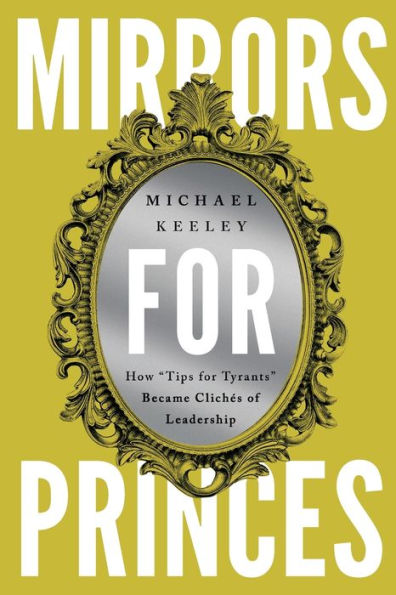Home
Mirrors for Princes: How "Tips Tyrants" Became Clich�s of Leadership
Loading Inventory...
Barnes and Noble
Mirrors for Princes: How "Tips Tyrants" Became Clich�s of Leadership
Current price: $29.95


Barnes and Noble
Mirrors for Princes: How "Tips Tyrants" Became Clich�s of Leadership
Current price: $29.95
Loading Inventory...
Size: Paperback
*Product Information may vary - to confirm product availability, pricing, and additional information please contact Barnes and Noble
A historical look at the roots of management theory reveals its flaws and offers important lessons for today's leaders
For four thousand years, kings and queens ruled the known world, while management experts—in the guises of sages, clerics, and courtiers of all kinds—told them how to do it. These proto-experts in leadership, ethics, and strategy wrote books describing the perfect prince. In such books, rulers could seek and polish their own reflection, as in a looking glass. These books were called mirrors for princes.
Mirrors for Princes
documents the clichés of this genre of literature. Typical mirrors taught the same formula, over and over: that people behave badly because of their pursuit of self-interest, which needs to be harnessed to a common goal by the ruler or leader. Eighteenth-century revolutions spelled the demise of princes and led to books that sought instruct them. Today, the clichés of mirrors for princes live on in modern mirrors for managers. The rhetoric of common goals and transformational leadership has a pleasing resonance for top managers, affirming their authority, just as it did for kings and queens in mirrors for princes. Keeley's goal is to sensitize readers to these clichés and to provide today's business leaders with the tools to think more critically when reading business books.
concludes with advice for writers of management literature, suggesting how organizational theorists and business ethicists might avoid replicating the clichés of mirrors for princes by adopting a social-contract model of organizations.
For four thousand years, kings and queens ruled the known world, while management experts—in the guises of sages, clerics, and courtiers of all kinds—told them how to do it. These proto-experts in leadership, ethics, and strategy wrote books describing the perfect prince. In such books, rulers could seek and polish their own reflection, as in a looking glass. These books were called mirrors for princes.
Mirrors for Princes
documents the clichés of this genre of literature. Typical mirrors taught the same formula, over and over: that people behave badly because of their pursuit of self-interest, which needs to be harnessed to a common goal by the ruler or leader. Eighteenth-century revolutions spelled the demise of princes and led to books that sought instruct them. Today, the clichés of mirrors for princes live on in modern mirrors for managers. The rhetoric of common goals and transformational leadership has a pleasing resonance for top managers, affirming their authority, just as it did for kings and queens in mirrors for princes. Keeley's goal is to sensitize readers to these clichés and to provide today's business leaders with the tools to think more critically when reading business books.
concludes with advice for writers of management literature, suggesting how organizational theorists and business ethicists might avoid replicating the clichés of mirrors for princes by adopting a social-contract model of organizations.
















